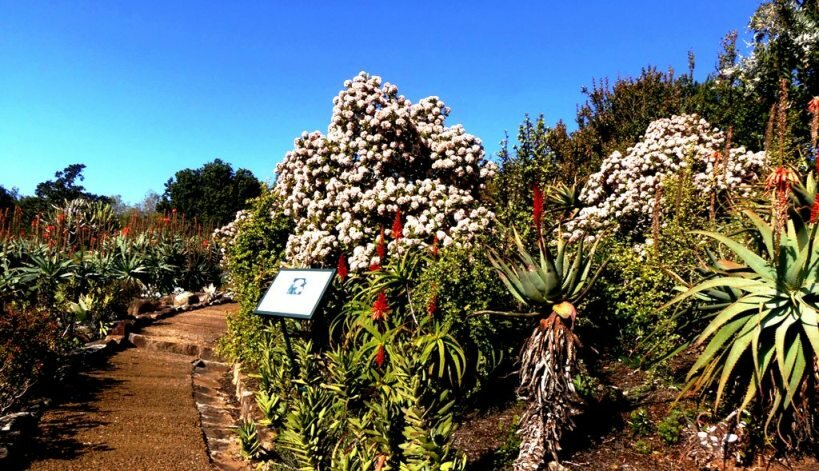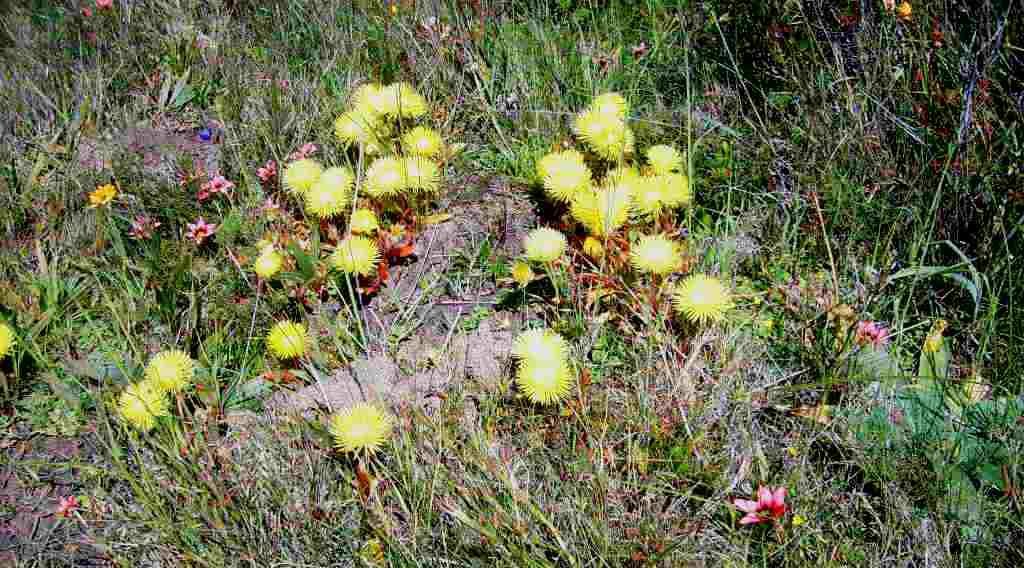

Spring on the West Coast
Many of the lovely and unusual flowering plants are to be seen in the month of October in the Western Cape and the Namaqua region of the Northern Cape. They are looking particularly good at present. Thousands of local and overseas visitors flock to sigh over them, take photographs and enjoy their splendour.
Finding interest and pleasure in growing plants is a hobby well known to many people. In South Africa we are particularly blessed with the beautiful, unusual and huge variety of indigenous flowers, shrubs and trees. Many can be grown in one’s own garden or they may be seen in the attractive settings of the number of botanical gardens in various parts of the country.
Another way of appreciating the plants is by viewing them growing naturally in the wild. But whether one is walking around one’s own garden planted with local specimens or viewing elsewhere, one point often comes to mind. The plant collectors/gardeners/botanists who braved an unknown country to explore, find and bring back to other parts of the world these treasures.
The 16th, 17th and 18th centuries were periods of discovery. Gardeners, plant collectors, botanists were employed by wealthy patrons to visit distant lands and bring back their finds. In this way the abundance of what was discovered plant wise helped to build up collections that in turn opened a largely unknown floral kingdom. In time the Swedish botanist, Karl Linnaeus, would create a system of classifying the plants. But before the finding and then the delivery could take place the actual work had to be done.
Containers had to be found or built to hold future greenery of different kinds; suitable guides had to be contacted and offered employment for unknown periods and in most cases unknown geography; wagons drawn by oxen with men to drive and care for them; equipment had to be carefully packed as had clothes, food and water.

Spring on the West Coast
Notes setting out details of the findings had to be painstakingly detailed. Months could pass until the eventual return to the port of Cape Town and a ship was available to convey all back, via a long sea voyage, to gardens waiting for the new arrivals.
Scottish born Francis Masson employed by Kew Gardens, London was sent to the Cape to explore. He arrived in 1772 and left in 1775 with many, many species of plants. Among these were those that would later be named as Amaryllis belladonna, Zantedeschia aethiopica.
Franz Boos, an Austrian gardener, was sent by Schonbrunn Gardens in Vienna, Austria to the Cape in 1786, William Burchell, traveller, naturalist, explorer arrived at the Cape in 1810 and left in 1811. Later he would write two volumes on his travels entitled: Travels in the interior of Southern Africa.
Between March and April 1853 the ship Pallada anchored in Simon’s Bay. Aboard was a medical doctor Heinrich Weirich who, interested in nature, collected many plants. These eventually reached Saint Petersburg Botanical Garden in Russia.
Today these beautiful plants, trees and the animals of the country, continue to live and grow and are a part not only of our natural riches but very much part of our economy.

Spring on the West Coast
